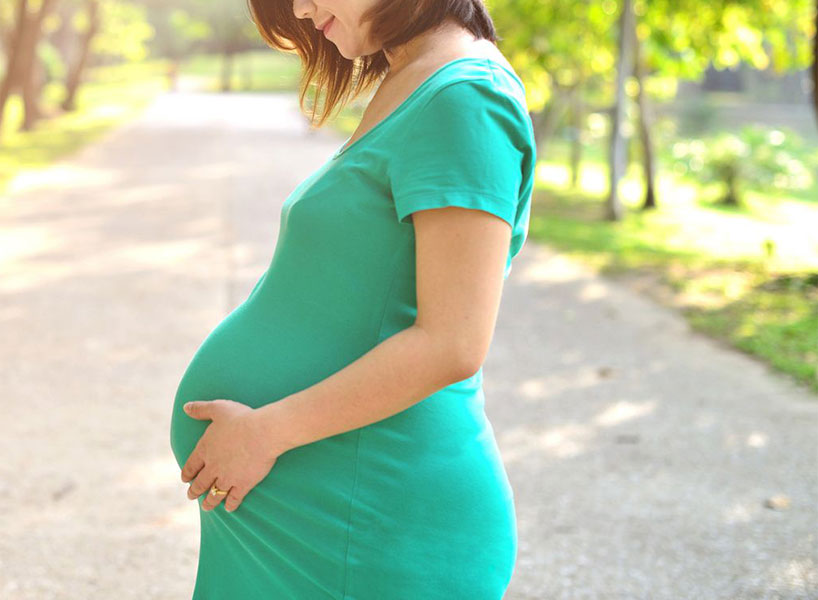UTERINE FIBROIDS
What are uterine fibroids?
Uterine fibroids are tumours which grow from cells forming the muscle of the uterus (womb). Uterine fibroids, which are also called leiomyoma or myoma of the uterus, can grow on the uterine wall and push out into the bladder, bowel or intestine. They can also grow Uterine Fibroids within the uterine wall, or even project from the wall of the uterus on a narrow stalk into the uterine cavity.
Fibroids can be as small as a pea or as large as a football and are almost always benign, no matter how large they get. Having uterine fibroids does not increase your risk of cancer.
If a fibroid or cluster of fibroids is particularly large or is growing on the outside of the uterine wall, it can sometimes push the uterus aside or force it to grow abnormally. A uterine growth may also put pressure on the bladder or intestines.
On rare occasions, a large fibroid may block the opening of the uterus. In that case, a pregnant woman may need to have a caesarean delivery.
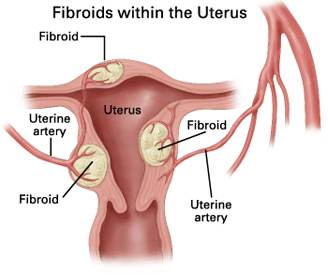
Why do women get them?
No one is certain what causes uterine fibroids, but changing oestrogen levels seem to play a part in their growth. When oestrogen levels are high, as a result of pregnancy or contraceptive pills, for example, the rate of fibroid growth increases.
About 20 per cent of women of childbearing age have uterine fibroids but they are not usually found in women under 30 years old. They rarely appear in young women before they begin menstruating.
As a woman approaches the menopause and her oestrogen levels decrease, uterine fibroids are likely to shrink or almost disappear. Apart from being a woman of reproductive age, no other risk factors for fibroids have been found.
What are the symptoms?
Many women never even know they have uterine fibroids. If symptoms do exist, they may include:
painful periods
prolonged and heavy menstrual bleeding (which may lead to iron deficiency or anaemia)
more frequent or uncomfortable urination caused by pressure on the bladder
feeling of fullness or pressure in the lower abdomen
pelvic pain
backache
constipation
infertility
miscarriage.
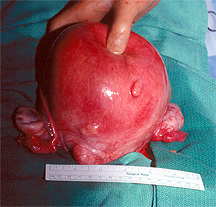
How are they diagnosed?
Most uterine fibroids are found during a routine internal examination when your doctor notices a lumpy or irregular uterus. If you have painful or recurring symptoms, your doctor may arrange for an ultrasound to distinguish fibroids from cysts, tumours and other pelvic masses. If the fibroids have grown on the inner lining of the womb or inside the uterine cavity, they can also be seen using a hysteroscope, which is a viewing tube inserted up through the vagina and cervix into the uterus.
How are they treated?
Most fibroids don't need to be treated unless the symptoms are causing you problems. Your doctor will make a recommendation based on:
the amount of pain or blood loss during menstrual periods
how quickly the fibroid is growing
your age, since fibroids shrink with the onset of the menopause
your desire to have children.
In rare cases fibroids can contribute to infertility and some surgery options cause sterility.
If you do need treatment, there are a number of options to consider (some are more widely available than others). They include:
Endometrial ablation can be used for fibroids that have grown in the inner layer of the uterus. Endometrial tissue is removed from the inner lining of the womb, where the fibroid is growing, using laser energy, a heated wire loop, microwave heating or hot fluid in a balloon.
Myolysis can be carried out during a minor surgical procedure called a laparoscopy. A surgeon inserts needle probes or electric current directly into the fibroid and cauterises both the fibroid and the blood vessels around it. It is still an experimental form of therapy.
Myomectomy is a surgical procedure to remove the fibroids that leaves the uterus intact. This operation is used for women who still plan to have children. It is technically challenging, and can lead to greater blood loss than a hysterectomy.
Laparascopic myomectomy can be used in some cases, particularly where the fibroid or fibroids have grown outside the uterine cavity. If the fibroids have grown inside the uterine cavity, a hysteroscopic myomectomy is performed.
Hysterectomy, which is an operation to remove the entire uterus. As a result, a woman can no longer have children. Although hysterectomy used to be the standard treatment for uterine fibroids, the procedure is now primarily recommended for women who are nearly at the menopause, are not concerned with infertility or have severe symptoms.
Uterine artery embolisation is a procedure carried out by a radiologist using advanced X-rays to pinpoint the exact location of a fibroid and the blood vessels around it. A plastic plug is injected into the vessel to cut off the blood supply to the fibroid, which eventually "starves", shrinks and disappears. This is a relatively new treatment. Its safety for use in women wishing to get pregnant is not yet fully established and it remains an experimental technique in this situation.
Drugs which lower oestrogen levels may be used to shrink or temporarily halt fibroid growth, particularly before surgery. However, since the drugs often cause menopause-like symptoms, such as hot flushes, vaginal dryness and decreased bone density, a course of treatment usually lasts only three to six months. Fibroids often continue growing once hormone therapy stops.
Some treatments are more successful than others. For example, after a myomectomy there is a 25 per cent chance that new fibroids will grow within 10 years of surgery.
It is thought that arterial embolisation stops fibroids from growing again, but more research is needed on this relatively new technique before any firm conclusions can be drawn. The only procedure that guarantees fibroids will not recur is a hysterectomy.
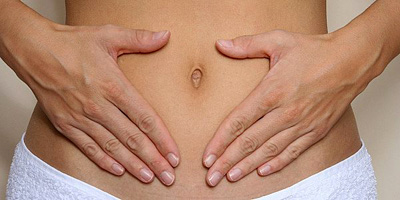
Can fibroids cause fertility problems?
There is evidence that fibroids are associated with subfertility (reduced fertility). They have been linked with an increased risk of miscarriage in the first and second trimester and an increased risk of premature delivery. Fibroids have also been linked with a reduction in the success rate of fertility treatments.
However, there is lack of agreement on exactly how and why this is so, because some women go on to conceive and have successful pregnancies despite having relatively large fibroids. One theory is that the fibroids distort the uterus in a way that affects conception, while another theory is that the ability to carry a pregnancy is impaired because the fibroid affects the blood flow.
If you know you have a fibroid and you're having problems conceiving then see your doctor for referral to a fertility specialist. The first course of action will be to find out whether there are any other possible causes of the fertility problem and treat them, if necessary.
Fibroids alone probably only cause fertility problems in less than 3 per cent of women. If this applies to you then your doctor may advise you to continue to try to conceive naturally for up to two years, unless you are over 34 years of age. In this case you are better off seeking treatment sooner rather than later, because fertility tends to rapidly decline with age.
It is unlikely that you will be offered IVF straight away, as there is little evidence that this improves your chances of a successful pregnancy.
There is also a lack of evidence on whether surgery helps women with fibroids to conceive and go on to have a successful pregnancy. Your specialist will work with you to decide on the best treatment option for your case.
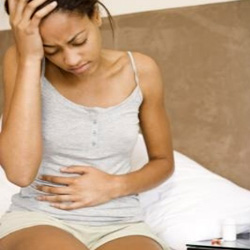
How can I ease my symptoms?
If pain or bleeding during menstruation caused by fibroids is an ongoing or worsening problem, see your doctor. In the meanwhile, to ease discomfort:
take over-the-counter pain relief for cramps and body aches
rest in bed when symptoms are worst
eat foods high in iron (such as lean red meat and spinach) and take iron supplements (if your doctor recommends it) to avoid anaemia caused by heavy menstrual bleeding
hold a hot water bottle against your tummy or have a warm bath to help relieve pain.
What can be done to prevent uterine fibroids?
Unfortunately, there is no known way to prevent fibroids either from growing or recurring.

